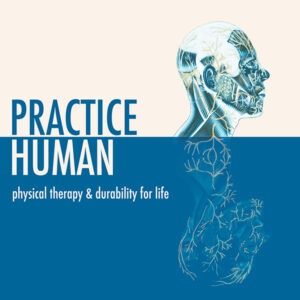
“Oh wow. I always thought that people who do yoga don’t get injured”
I heard this exact phrase said two nights in a row, by two different people, at two office holiday parties.
When I meet people for the first time and they discover I’m a physical therapist, the first question is usually something about my specialty—what type of people or conditions I most often treat.
At my husband’s office holiday parties (yes there were two, two nights in a row 😅) I explained that I was a yoga teacher for about 14 years before transitioning into physical therapy. Because of this background, much of my patient population is long-time yoga practitioners and teachers.
I’m going to interject and say a couple important things before moving on with this story:
1 – I think it’s incredibly valuable to listen to people outside our experience bubbles and be open to hearing the general population’s perspectives on topics we become too close to on a minute level. To make our work accessible, we must be open to this, without judgement, just learning and gaining understanding.
2 – Yoga is not just a physical practice, period.
In deeper conversation, I found that the folks at the party believed yoga asana was generally safe, healthy, and that everyone practicing would feel better, not worse, in their bodies with more exposure to the practice.
I said yes. In general I believe this to be true. The more I learn about the body the less fearful I am about traumatic injuries happening suddenly with a physical practice someone has been doing for a long time.
I explained to them that the type of yoga injuries I treat people for, often creep up gradually over time—I’m talking years to decades. Clinically we say “insidious onset” but I didn’t use those terms with the folks sipping Prosecco at the parties.
I explained further that yoga asana itself wasn’t doing harm. The trouble comes from doing that and nothing else. There’s only so long our bodies can tolerate a high volume of the same forces before we need to cross-train with something different. I offered further: Underloading can be just as problematic as overloading.
I then mentioned treating runners who only run. Or strength athletes who only lift heavy weights. Too much of the same thing with little or no variety can put too much of the same type of stress on the body. Repeat that over a long period of time without a break and without a change in the type of stimulus—that’s where people run into problems.
These examples seemed to shed some light. I take a simple “four food groups” approach to general fitness for longevity. More on that below.
Are you getting a balanced movement diet?
The “four food groups” of general fitness for longevity
(according to me, in no particular order, and definitely not social media influencery medical advice):
1 – 💪 Move external weight. Move heavy weight slow. Move moderate weight moderately fast. Higher intensity 2 days/week, lower intensity 3-5 days/week.
2 – 🚴♀️ Move your body weight cyclically (with repetition, think brisk walking, jogging, cycling, rowing) at a steady, moderate pace for 30-45 minutes. Can be done most days of the week.
3 – 🏃♀️ Move your body weight fast. Short bursts with high level effort. Include impact. 1 day/week in the beginning, working up to 2 days/week with experience.
4 – 🥰 Move your body weight or light external resistance with love and curiosity. Chill, explore, meander. Observe sensations, discover pockets of space, breathe** Very low intensity for active recovery. At least 1-2 times/week, ideally a little bit every day.
**Folks who only practice yoga are stuck somewhere in the latter, with a bit of moderate effort bodyweight strength training that plateaus in strength adaptation after a year or so of consistent practice. The other three food groups are pretty big deal missing stimuli for a balanced movement diet.

Leave a Reply